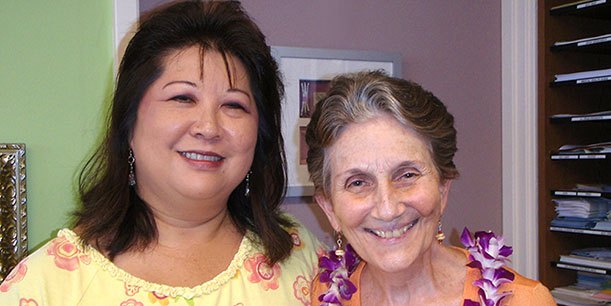By SueAnne Juskowich, Kapi‘o Staff Writer/
In a recent Omnitrak People’s Pulse Survey, a majority of Hawaii residents agreed that college degree is imperative in today’s world. However, the U.S. Census Bureau reports that a whopping 56 percent of Hawai‘i’s residents in 2013 did not earn such credentials.
Of these, 22 percent were living in poverty, according to Pew Research Center statistics.
The figures dramatically improve for Millennials who have completed a college degree program: Only 15 percent of associate degree holders and 6 percent of bachelor’s degree holders live below the poverty line. In fact, the average American with a bachelor’s degree in 2013 enjoyed 70 percent higher wages than those who held only a high school diploma, according to the U.S. Bureau of Labor Statistics.
The statewide awareness 55 by ’25, a collaborative effort between Hawai‘i P-20 Partnerships for Education, the University of Hawai‘i system and the state Department of Education, seeks address this educational chasm by prioritizing education across all grade levels, and thereby effectively increasing the number of adults holding a college degree in Hawaii to 55 percent by the year 2025.
In support of this statewide graduation campaign, Kapi‘olani Community College offers a number of support services for nontraditional, low-income, and other at-risk students. Some of these include the Bridge to Hope program, Lunalilo Scholars Project, Achieving the Dream National Reform Network, and the Kapo‘oloku Program for Native Hawaiian Student Success.
Bridge to Hope is a UH system program operated in conjunction with the state Department of Human Services, and KCC’s Single Parents and Displaced Homemaker Program Coordinator Cathy Wehrman.

Cathy Wehrman, Single Parents and Displaced Homemakers (SPDH) Program Coordinator, with retired faculty member Jill Abbott, who established a scholarship to help single-parent students. Photo: UH Foundation
The program’s goal is to transition low-income student parents and welfare recipients out of poverty, off of welfare, and into gainful employment through degree attainment. This local program is nationally recognized as an attempt to employ academic scholarship to bridge the gap between financial hardship and independence. Its primary benefit is to help struggling student parents find gainful employment on campus, paired with a reduction of work hours required to receive cash benefits.
Nontraditional and first-year college students who lack financial support can also apply to the Lunalilo Scholars Project for tutoring, financial literacy, emotional and counseling assistance. Started in 2012, this privately funded project provides confidence and support to those students who are often overlooked in their academic journey.
Another program for disadvantaged students is the Achieving the Dream National Reform Network, which specifically addresses educational retention gaps for students of color.
Michaelyn Nakoa, KCC’s Vice Chair of Student Success Council and Coordinator of the Kapo‘oloku Program for Native Hawaiian Student Success, jumped on board with this national movement, hoping that it will specifically address the equity gaps for Native Hawaiians. She says that 50 percent of Native Hawaiian students drop out within their first year of matriculating, and that this is likely due to their identity struggles and history of colonization.
“We want to traverse all departments and find a way to fit these support programs into the campus culture,” Nakoa said. “We want to see what everyone on campus can do to help our students feel welcome, and we don’t want to pass them around between offices.”
Nakoa has since teamed up with Lavache Scanlan of the Lunalilo Scholars Project to teach summer bridge and student success courses rooted in Hawaiian values.
The Kapo‘oloku Program also offers cultural events and summer scholarships to Native Hawaiians requiring coursework in remedial math and English. Its goal is to help Native Hawaiian students to persist in their educational journey from start to finish.
“It’s the responsibility of the village,” says Nakoa. “The challenge is to scale it up with limited resources.”
Limited resources are in fact the reoccurring theme here. Students facing the highest levels of economic and other hardships are the least likely to complete their educational journeys, and are also the ones who stand to gain the most from a college degree. Resources are not only finite for these students, but also for the programs who strive to help them.
